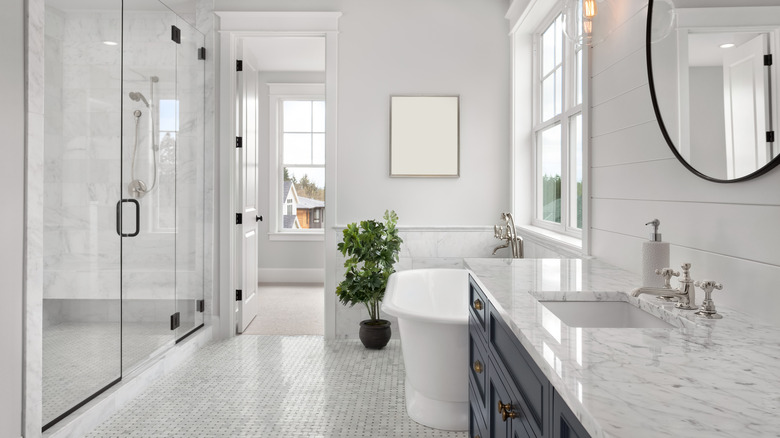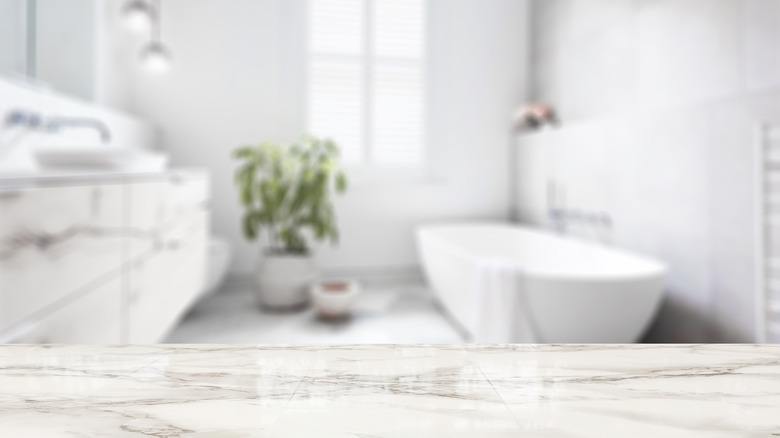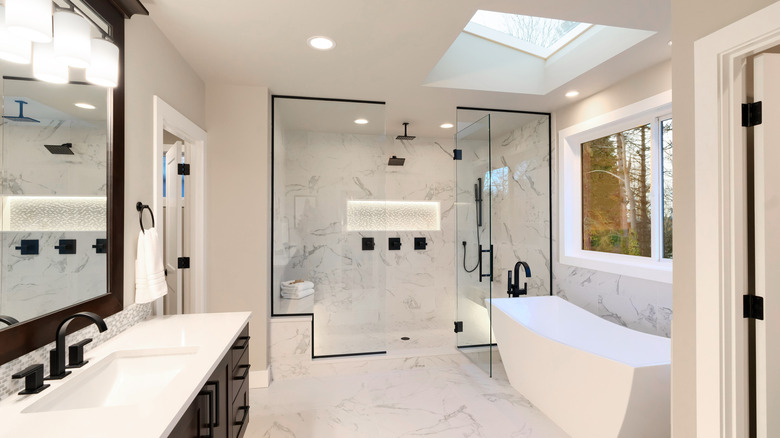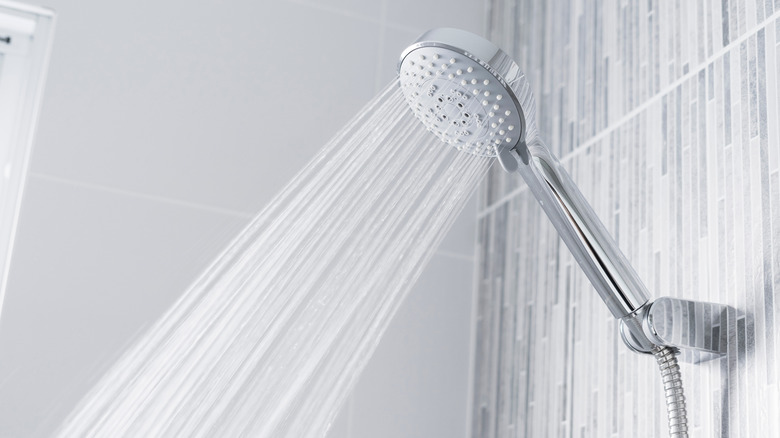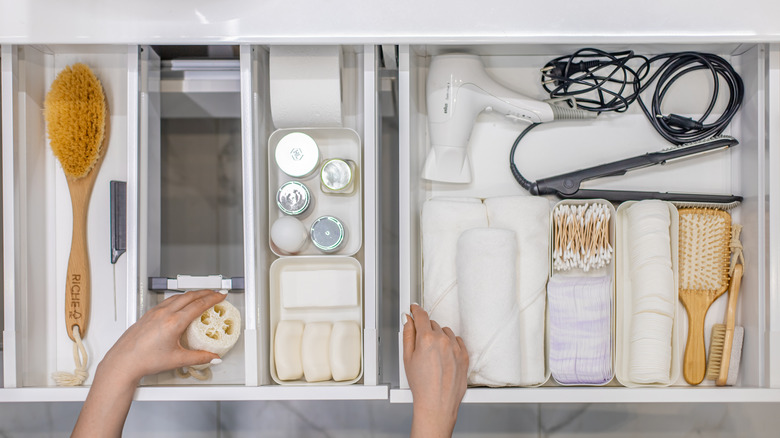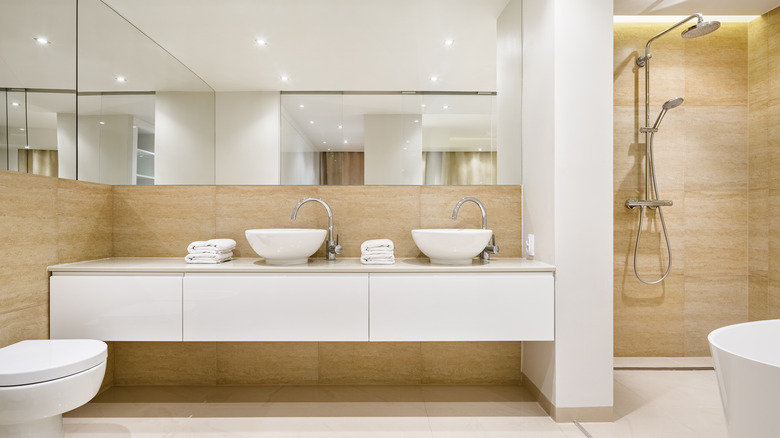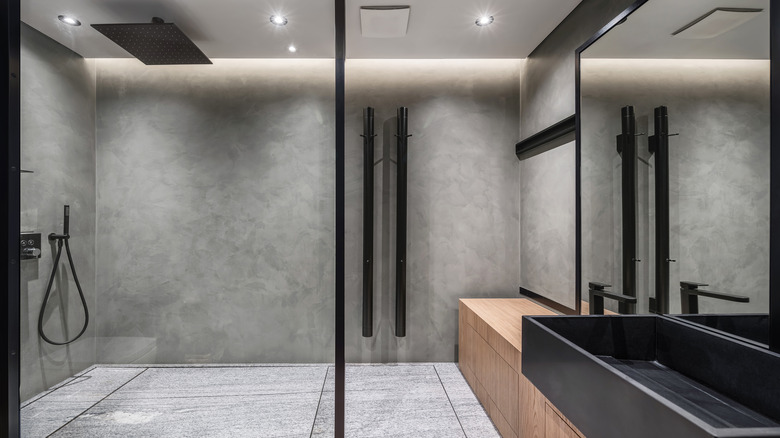The Best And Worst Upgrades You Can Make To Your Bathrooms
Having a bright, clean, and modern bathroom is a top priority for many homeowners. In fact, according to a 2019 survey by the National Association of Realtors, bathroom renovations were the most popular remodeling project. These renovations can, however, be pricey. According to Remodeling, the average mid-range bathroom remodel costs $21,377, but homeowners were able to recoup 64% of their costs when selling their homes.
If you're considering putting your house on the market, it's important to make renovation choices that are universally appealing. While a unique tile pattern may perfectly fit your eclectic design aesthetic, it could be off-putting to a potential buyer. Even if you don't have any plans to sell, it's prudent to consider which upgrades will add to the value of your home down the line.
If there's a bathroom remodel in your future, read on to learn about the best upgrades you can make — and the ones that aren't worth the money.
Invest in high-quality materials
When choosing materials for a bathroom renovation, quality is key. If it's in your budget, invest in long-lasting materials that will look great for years. Tile is featured in most bathrooms because it's durable, moisture-resistant, and easy to clean. When it comes to flooring, tile costs between $3 and $20 per square foot, with the price largely depending on the material you choose. According to HomeAdvisor, natural stone tile, like marble or travertine, costs between $6 and $20 per square foot while vinyl or linoleum flooring costs between $3 and $7 per square foot. These costs are similar for tiling showers and backsplashes.
When it comes to countertops, you'll have to choose between natural stone (like granite, marble, or quartz), ceramic, porcelain, or laminate. Natural materials are pricier, but they're also worth the investment because of their durability and longevity. Although, some natural materials, like marble, have specific care requirements. There's a reason buyers' ears perk up when they hear the phrase "granite countertops."
Splurge on the shower
Installing a new shower costs, on average, between $2,190 and $8,463, according to HomeAdvisor. This is one area where it's worth it to splurge. While tub-shower combos were popular for decades, it's now more desirable to have a separate bath if you have the space. Many homeowners are even opting to completely forgo a tub in the master bath. Ellen Rady, designer and president at Ellen Rady Designs, told HGTV: "A lot of master bathrooms are taking out the tubs all together as long as there is a tub someplace in the home."
A sizable walk-in shower lends a high-end feel to any bathroom, with glass walls — rather than a traditional shower curtain — creating a bright and airy effect. "A large, walk-in shower has become the most desired feature of the master bathroom," says Dan DiClerico, a smart home strategist and home expert for HomeAdvisor. "At the very high-end, you could add a soaking tub in there, but a walk-in shower is definitely the top priority." Consumer Reports recommends installing a shower that measures at least four by six feet for the best results.
Choose eco-friendly design
When renovating any part of your home, it's important to consider energy-efficient appliances and fixtures. When it comes to bathroom renovations, some easy eco-friendly options include low-flow toilets and water-saving showerheads. The 2016 Residential End Uses of Water Study by the Water Research Foundation reports that standard showerheads use 2.1 gallons of water per minute, which adds up to 15.8 gallons for the average shower, which lasts 7.8 minutes.
Luckily, the Environmental Protection Agency estimates that the average American family could save 2,700 gallons of water annually simply by installing a certified low-flow showerhead. These days, eco-friendly options don't mean lower performance. Low-flow showerheads are able to replicate the feeling of high water pressure by aerating the water. Not only does this benefit the planet, but it also saves you money on your utility bills and acts as a big perk for potential buyers who have an eco-friendly mindset.
Don't forget to add storage space
Now that we've covered some of the best upgrades you can make to your bathroom, let's explore some of the worst mistakes people make when renovating. One of these missteps is forgetting to create storage space, per Consumer Reports. Avoid cluttered countertops by making sure everything you use in the bathroom on a regular basis has a dedicated space out of view.
If you wear makeup or have an extensive skincare routine, it's a good idea to include dedicated storage for all of your cosmetics. The best solution for this is shallow drawers with dividers where everything can be easily seen and accessed. Many modern bathrooms don't include medicine cabinets, so it's also essential that you have somewhere to store medications and other small items. Be sure to include storage under the vanity for hair care tools or any frequently used cleaning products. Make storage room for bath towels and face towels so that you don't have to run out to a hallway linen closet when you need one.
Skip the double sink
Double sinks have become an inescapable trend in bathroom renovations in recent years, but it's prudent to think twice before installing a second sink in your master bath. Double sinks admittedly provide a number of advantages, giving both spouses their own space to simultaneously brush their teeth, wash their faces, and perform other grooming tasks. This is handy for busy mornings when you're both rushing to get out the door.
The downside, however, is a loss of space. In small- to medium-sized bathrooms, installing a second sink means losing out on counter space and even floor space for something more important like a larger shower or a separate tub, per Consumer Reports. That's not to mention that there's also a cost consideration involved with double sinks due to the additional plumbing required. If you have limited square footage, consider whether another sink is really the best use of space.
Avoid trendy designs
When designing your new bathroom, you may be tempted to give into some of the latest trends. Social media sites like Instagram and Pinterest are full of creative interior design ideas that are in style at the moment, but keep in mind that their appeal might be fleeting. While pink tiles, wood accents, and door-free shower stalls in bathrooms seem like great choices now, you might come to regret them a few years down the line, according to Consumer Affairs. If you need proof, simply look up some of the biggest trends from a decade ago to see how they hold up today.
It's best to stick to classic, neutral opinions when choosing permanent fixtures like tile, bathtubs, and vanities. The traditional look never goes out of style, so you can't go wrong with simple, clean lines and shades of white, gray, and silver. To inject some fun into the space, add pops of color or on-trend items that can easily — and inexpensively— be swapped out, like towels, plants, and other accessories.
